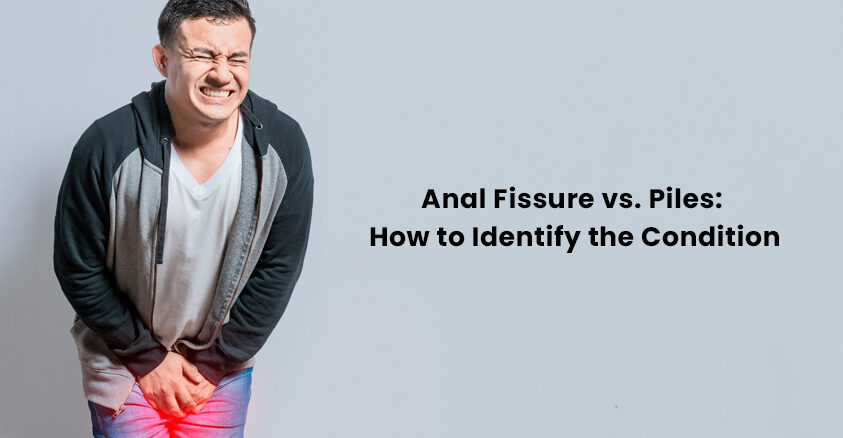Pain when passing a stool, bleeding, itching, irritation or discomfort around the anus, these are common complaints, however, each describes different problems. Two of the more common problems are anal fissures and piles (haemorrhoids). Although they may feel similar in symptoms to the person suffering, they are very different in regard to their cause, symptoms, and treatment.
What Is an Anal Fissure?
An anal fissure is a small tear or crack in the skin of the anal opening. It usually happens when you pass hard or dry stool, causing the skin to stretch and tear.
Common Symptoms of a Fissure:
- Sharp, cutting pain during or just after passing stool
- Burning sensation or itching around the anus
- Bright red blood on the tissue or stool (not mixed in)
- Visible tear at the anal opening
- A small skin tag (sentinel pile) if it becomes chronic
Pain is the most obvious and distressing symptom of a fissure. It can make people scared to use the toilet, which unfortunately makes the problem worse.
What Are Piles (Haemorrhoids)?
Piles, also called haemorrhoids, are swollen or inflamed veins in or around the anus and rectum. They can be internal (inside the rectum) or external (outside the anal opening).
Common Symptoms of Piles:
- Painless bleeding during bowel movement
- Itching or irritation in the anal area
- A lump near the anus (especially in external piles)
- Feeling of fullness or incomplete evacuation
- Mucus discharge in stool (sometimes)
Unlike fissures, piles are often painless, especially in the early stages. Pain may come later if they become large, infected, or thrombosed.
How to Tell the Difference – Quick Comparison
| Feature | Anal Fissure | Piles |
|---|---|---|
| Pain | Sharp, cutting pain during/after stool | Usually painless in early stages |
| Bleeding | Bright red blood, on wiping or stool surface | Bleeding during stool, may drip into toilet |
| Visible signs | Small cut or tear, sometimes with skin tag | Swollen lump or mass near anus |
| Itching | Mild to moderate | More common, especially with external piles |
| Cause | Passing hard stool, straining, constipation | Straining, pregnancy, chronic constipation, sitting long |
| Touch sensitivity | Very sensitive and painful | May or may not be painful to touch |
What Causes Both Conditions?
Both fissures and piles often stem from poor bowel habits such as:
- Chronic constipation or diarrhoea
- Straining while passing stools
- Low-fibre diet
- Dehydration
- Sedentary lifestyle
So, the root cause is often the same you need to treat your gut right to avoid both!
What Can You Do at Home?
For both fissures and piles, early-stage care is quite similar:
- Eat more fibre (fruits, vegetables, whole grains)
- Drink plenty of water (at least 8 glasses daily)
- Avoid spicy, fried, or processed foods
- Take warm sitz baths
- Use natural oils or soothing ointments
- Avoid straining on the toilet
- Stay active with light walks or yoga
When to See a Doctor
If significant symptoms have continued for longer than a week or you symptoms are getting worse, please don’t wait. Especially if there’s:
- Heavy or repeated bleeding
- Pain is increasing in intensity
- A lump is increasing or getting infected
- Uncertainty with regard to the condition
Ayurveda provides a safe, natural long-term opportunity to take care of yourself.
Get Professional Ayurvedic Care at Dr. Saraja’s Ayurvedic Anorectal Hospital
No matter if it’s piles or a fissure, Dr. Saraja’s Ayurvedic Anorectal Center has tailored solutions with proven successful therapies that have been used for centuries. We often treat patients credibly, without surgeries in most cases, using Ayurvedic therapies like Kshara Sutra, along with herbal medicines and dietary modifications to heal naturally.
We take pride in being recognized for Kshara Sutra in Kukatpally and are among the best Kshara Sutra hospitals in Hyderabad.

